Plant bugs continue to be a problem in some Virginia fields with ¼ of those scouted by the entomology team above threshold for the first two weeks of bloom. In anticipation of the upcoming bollworm flight, Monsanto sponsored a meeting last week at the TAREC to discuss mid-season insect management in cotton. Here is a summary of our discussion:
- For 2 gene cotton (Widestrike, Bollgard II, Twinlink): scouting for eggs is recommended. Sample 100 terminals and leaves. Aim for 10 in 10 locations in the field. If you find 25 eggs, spray an insecticide. I recommend Prevathon unless stink bugs or plant bugs are an issue in your field. In that case, use Besiege. Bollworm (Helicoverpa zea aka corn earworm) and tobacco budworm (Heliothis virescens) eggs are indistinguishable and budworms are 100% controlled by Bt cotton. There is some risk that you are spraying unnecessarily. Very low numbers (<3%) of larvae sampled in non-Bt cotton were budworms in 2016 and 2017.
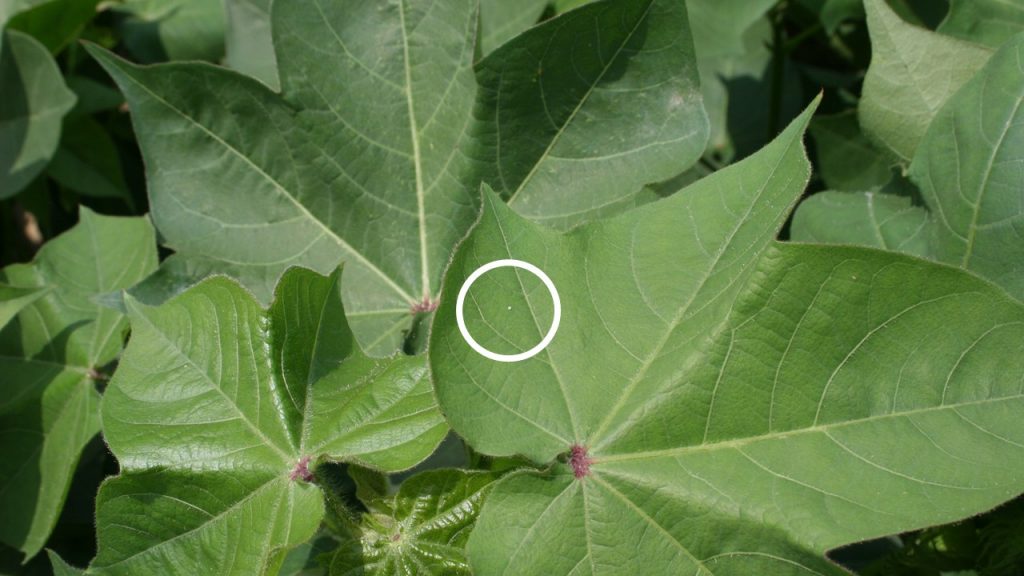
- For 3 gene cotton (Widestrike 3, Bollgard III, and Twinlink Plus): scouting for 2nd stage larvae (1/8″ or larger) is recommended. This gives in-plant toxins time to kill small worms. Sample 100 bolls, blooms, and/or squares. Aim for 10 in 10 locations per field. If you find three larvae in one trip, two larvae in two consecutive trips (two larvae in each trip), or one larva in three consecutive trips (one larva in each trip), spray insecticides. I do not anticipate damage in 3 gene cotton unless we have very high pressure.
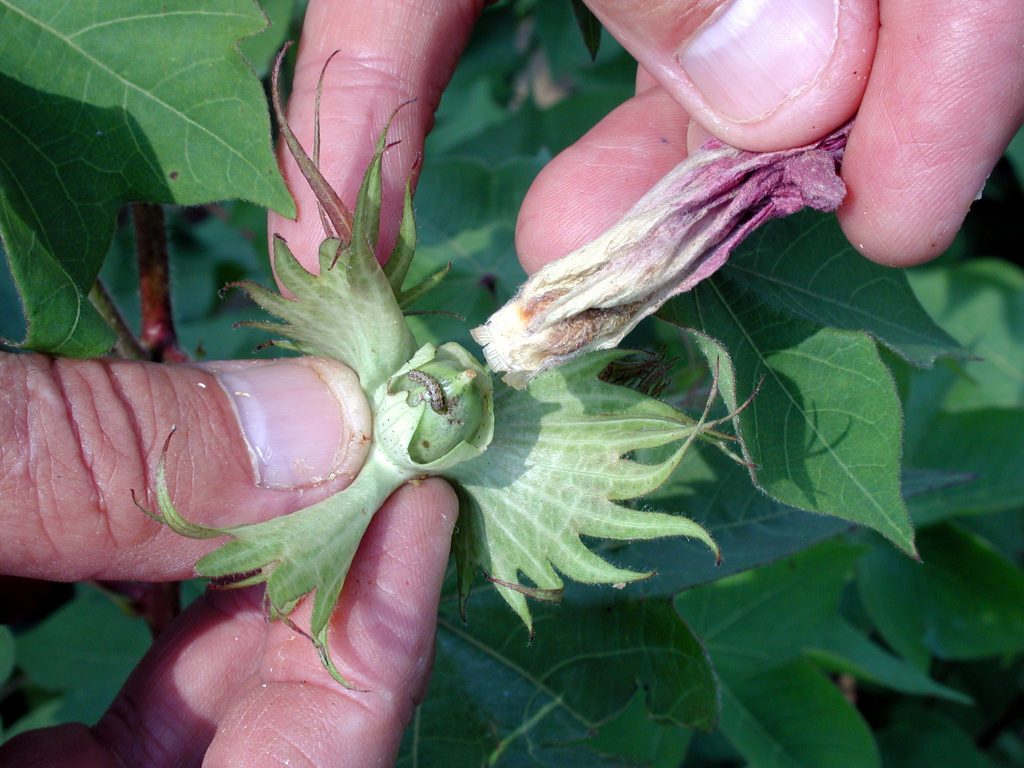
- Pyrethroids have performed poorly in cotton in 2016 and 2017 tests (15-50% control). I think that pyrethroids are too risky in cotton. Some growers are satisfied with the control that they have been achieving. Last year, worm specific products ran out in some Virginia locations. I recommend Steward as an alternative to Prevathon and Besiege for bollworm control in cotton.
- Weekly scouting is recommended for all pests. Bollworm eggs hatch fast (2-3 days) and worms cannot be controlled by any product once they are inside of the boll.
- Spray bugs only at threshold. Bloom threshold for plant bugs is 2-3 per drop cloth sample. For stink bugs, use damaged fruit thresholds: Week of bloom 1 = 50% internal boll damage; week 2 = 30%; weeks 3, 4 and 5 = 10%; week 6 = 20%; week 7 =30%; week 8 = 50%. About a dozen beneficial insects are common in Virginia cotton. Ambush bugs, big-eyed bugs, minute pirate bugs, green lacewings, two species of ladybird beetles, and several types of spiders are examples. They are of two types: 1) predators that prey upon an insect pest (see examples below), or 2) parasites that live within the host insect. These insects, particularly the predators, reduce the number of eggs and larvae of bollworms, plant bug nymphs and aphids. Because these allies lessen the impact of pest insects, common sense dictates that producers use them as a management tool. Their presence often means that growers can delay and, on occasion, eliminate some insecticide applications. However, the rapid increase in pest populations will often overwhelm the beneficial population and applications become necessary. Do not hesitate to spray pest insects at recommended thresholds.
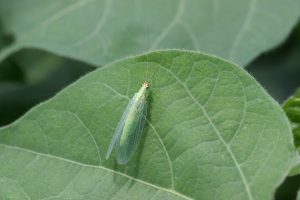
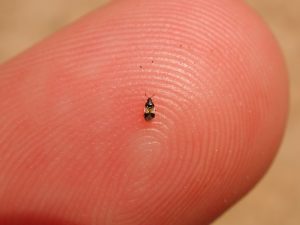
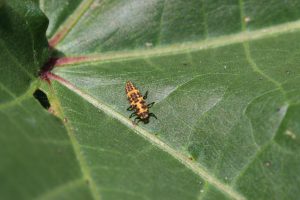
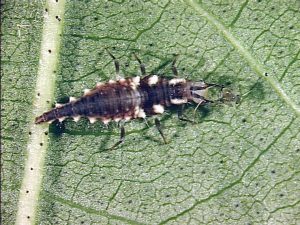
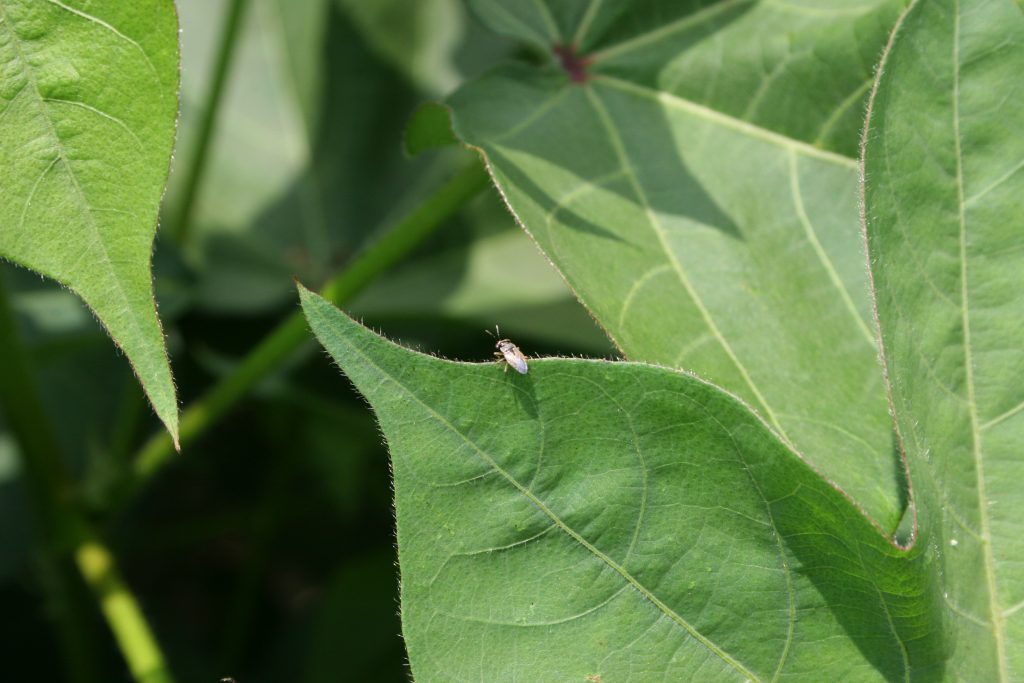
A big thank you to Seth Dorman and his scouting crew and to Glenn Roundtree for initiating and organizing our recent pest management discussion.
